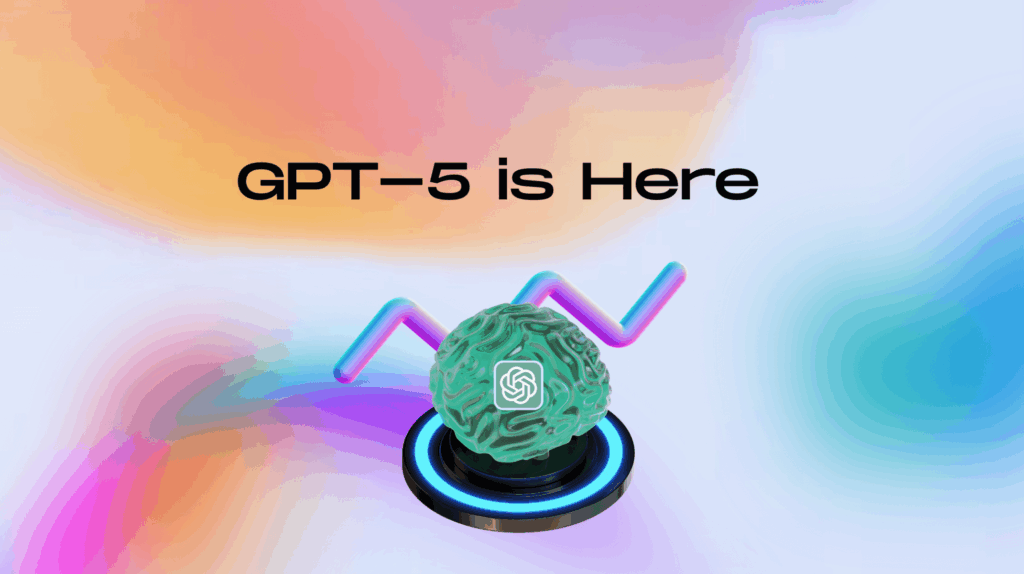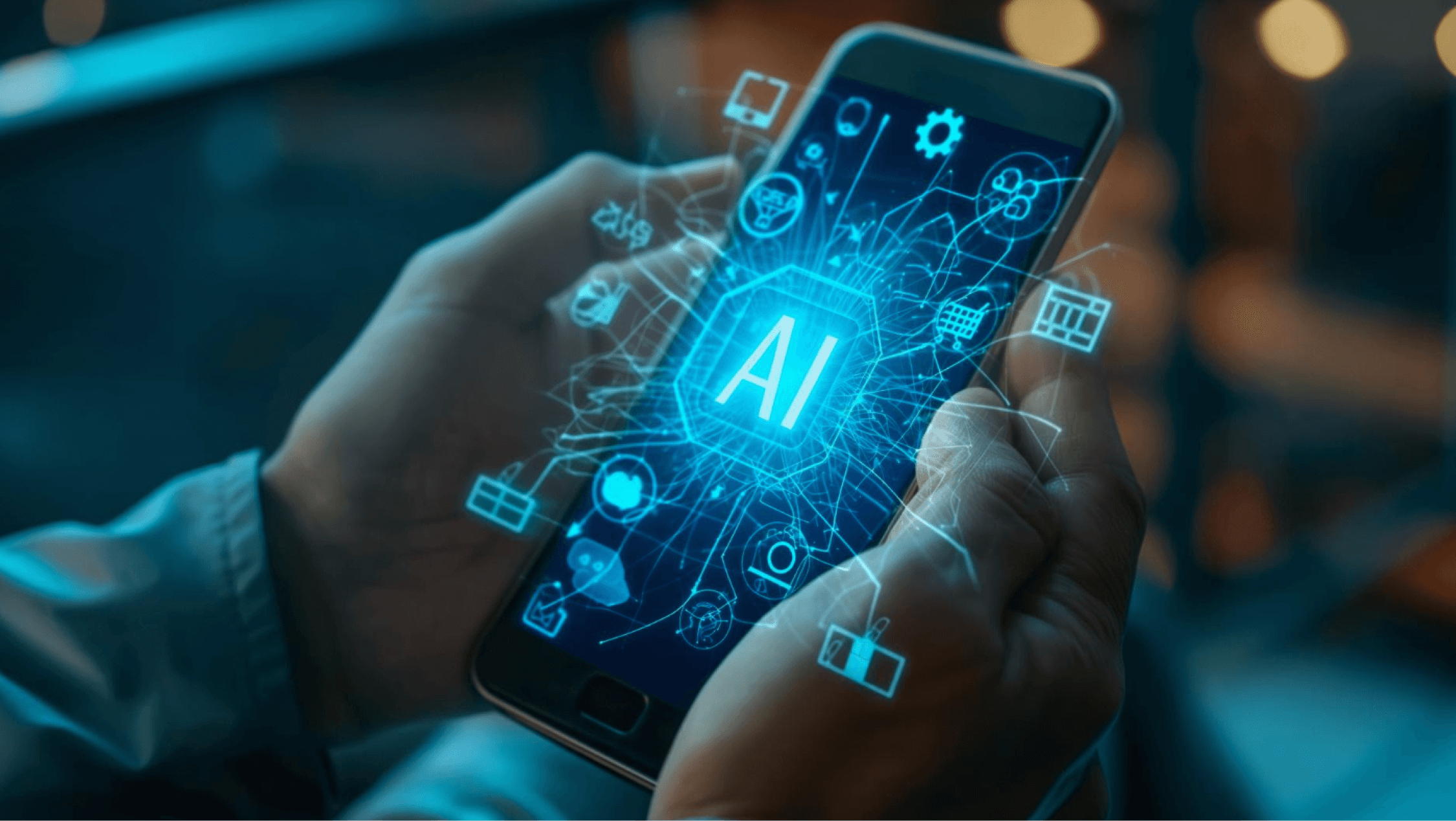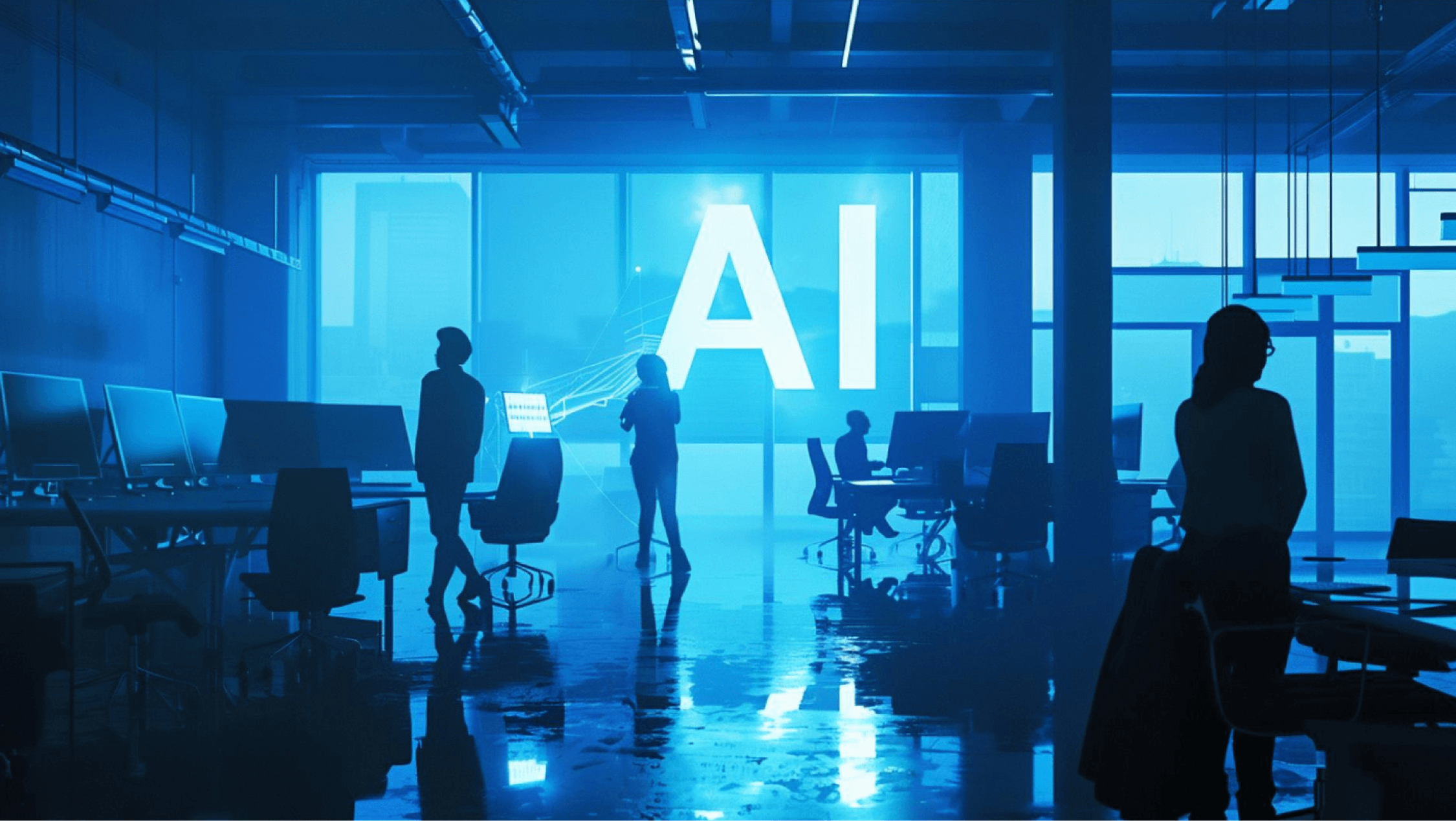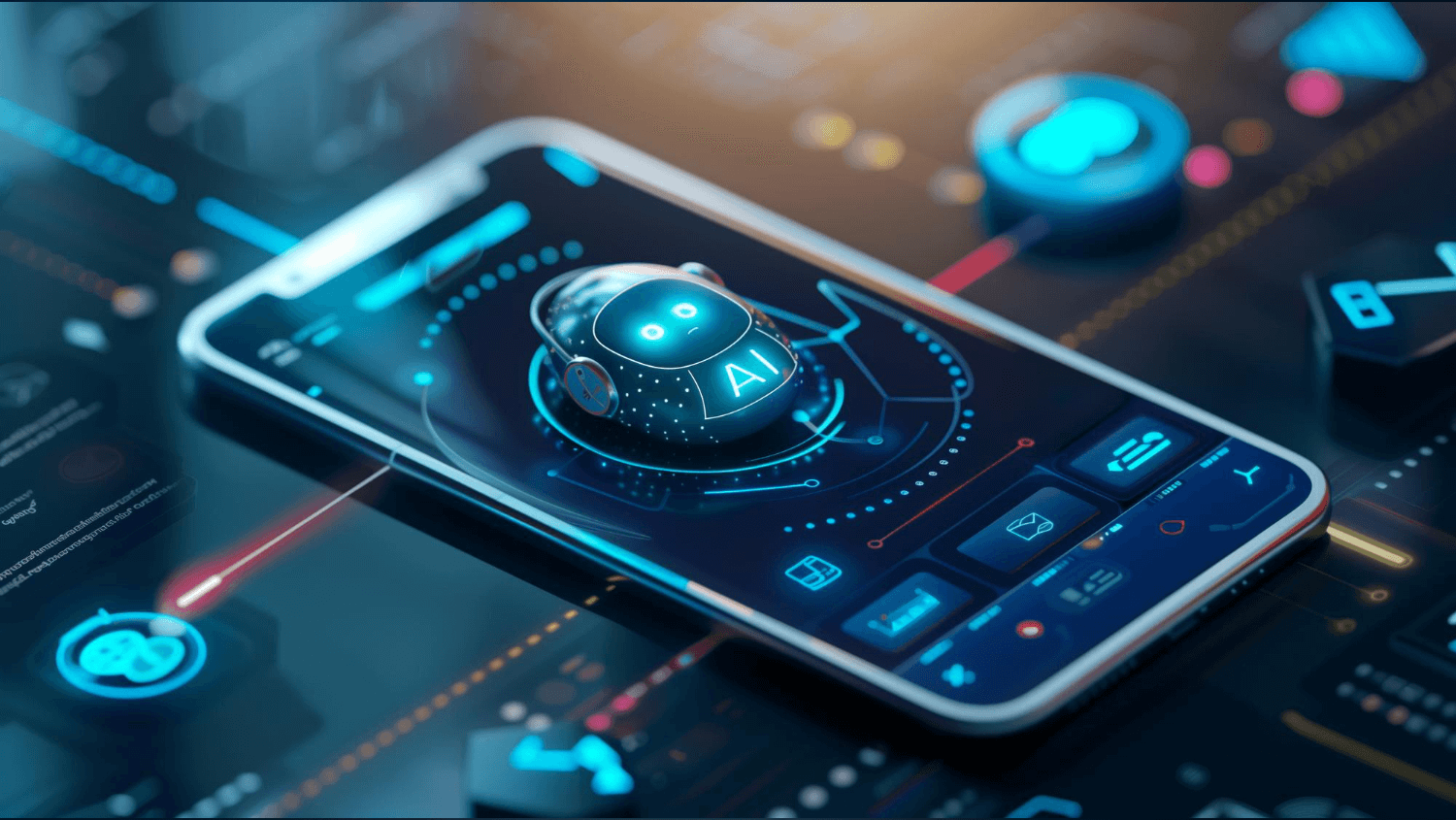On 7 August 2025, OpenAI introduced GPT-5, its most advanced AI model yet sparking immediate discussion across the global tech community.
The launch capped weeks of speculation and a carefully timed teaser that had AI enthusiasts and industry leaders on edge.
But GPT-5 is not simply another incremental release.
It arrives at a time when businesses are racing to automate workflows, creators are seeking more capable AI partners, and developers are demanding models that can reason, plan, and interact seamlessly across all formats.
GPT-5 answers all three demands in one unified system.
In this guide, we explore what makes GPT-5 different, the improvements it brings over previous generations, and how it could change the way we use AI.
Understanding GPT-5: An Overview
GPT-5 is OpenAI’s most advanced language model to date, officially launched in August 2025.
It represents a significant leap in artificial intelligence, combining improved reasoning, broader knowledge, and richer multimodal capabilities.
Unlike its predecessors, GPT-5 is not just an upgrade in size. It is designed to think, respond, and adapt more effectively to complex user needs.
At its core, GPT-5 is:
- Multimodal: capable of processing and generating text, images, and audio seamlessly, with video capabilities expected in future updates.
- More accurate: delivering answers with fewer factual errors and stronger contextual understanding.
- Faster in response: able to switch between “fast” and “deep thinking” modes depending on the task.
- Better aligned: with improved safety measures and adherence to user intent
Major Improvements Over GPT-4 and GPT-4o
1. Stronger Reasoning and Problem-Solving
GPT-5 handles complex, multi-step queries more reliably.
It is better at maintaining logical consistency, recognising subtle nuances, and delivering conclusions supported by context. This improvement is particularly valuable in fields such as:
- Research and analysis: producing deeper insights from varied sources.
- Software development: managing intricate debugging and code optimisation tasks.
- Strategic planning: supporting decision-making with clearer, evidence-based responses.
2. Enhanced Multimodal Capabilities
While GPT-4 could handle text, images, and audio, GPT-5 processes these inputs with greater precision.
It can interpret an image, read related text, and answer in a way that combines both seamlessly. Video understanding is expected in upcoming updates.
3. Unified Model Architecture
Previous versions required selecting between different models for speed or depth.
GPT-5 removes that friction with a dynamic routing system that automatically adapts to the complexity of each request, ensuring efficiency without sacrificing quality.
4. Reduced Hallucinations
GPT-5 has improved factual reliability through refined training methods and alignment systems.
It is less prone to making confident but incorrect claims, which makes it a stronger choice for professional and academic use.
5. Customisable Performance
GPT-5 is built for flexibility. It can switch between fast, lightweight responses for everyday queries and more deliberate, reasoning-heavy processing for complex projects.
OpenAI offers multiple model sizes, gpt-5 (full), gpt-5-mini, and gpt-5-nano, each optimised for different speed, cost, and capability requirements.
In ChatGPT, routing is handled automatically, so users benefit from the right variant without needing to choose manually.
For developers, the API and GitHub Copilot previews already showcase GPT-5’s integration for coding assistance and agent-based workflows.
GPT-5 Variants and Model Options
For the first time, advanced reasoning, multimodal input, and task execution have been combined in a single system removing the need to switch between separate specialised models.
The model is designed to manage complex, multi-step workflows with far greater reliability than its predecessors, while substantially reducing the risk of hallucinations.
In the year before GPT-5’s release, OpenAI introduced several notable models, GPT-4o, o1, and o3 — each advancing speed, reasoning quality, and interaction capabilities.
The GPT-5 Family
GPT-5 is not a single model, but a family of optimised variants tailored to different needs:
- gpt-5: The flagship version, built for advanced logic, chain-of-thought execution, and multi-stage tasks.
- gpt-5-mini: A lighter, cost-efficient option prioritising speed and resource savings.
- gpt-5-nano: Ultra-low latency performance for instant responses, ideal for real-time applications.
Also read: AI is Changing Work – A Recent Microsoft Research Explains What it Means for You
Release Timeline and Availability
The road to GPT-5 has been marked by over a year of speculation, industry leaks, and subtle hints from OpenAI executives.
The official confirmation arrived on 6 August 2025, when OpenAI posted a cryptic message on X (formerly Twitter) announcing a livestream for the following day.
The inclusion of the number “5” was all it took for the AI community to connect the dots.
The reveal came swiftly. On 7 August 2025 at 10:00am PT, OpenAI switched on GPT-5 for the world, making it instantly available through:
- The ChatGPT web and mobile apps
- OpenAI’s API for developers
- The GitHub Models Playground for hands-on experimentation
This timing matched earlier hints from CEO Sam Altman in February, who suggested the model was “only a few months away,” and CTO Mira Murati’s forecast during the GPT-4o launch that “PhD-level intelligence” would emerge within 18 months.
Phased Introduction
While the model is technically live for public use, access is being introduced in tiers:
- Priority Access: Granted to ChatGPT Plus subscribers, API developers, and GitHub Models users from day one.
- Enterprise Deployment: Larger organisations are being onboarded with dedicated integration support.
- Broader Rollout: Free-tier ChatGPT users are expected to gain access in stages, depending on infrastructure readiness and demand.
Positioned as OpenAI’s latest frontier model, GPT-5 marks a decisive step beyond GPT-4.5 Orion, which served as an interim bridge rather than a complete generational leap.
This launch signals a new era for large language models, uniting the most advanced reasoning and multimodal capabilities in a single, accessible system.
Tap into our expert talent pool to build cutting-edge AI solutions.
Training Approach and Data Sources
GPT-5 represents the culmination of years of iterative development in both architecture and training methodology.
OpenAI has blended advances in compute power, safety research, and alignment strategy to deliver a model that is not only more capable, but also more reliable.
Training Methodology
- Multi-Stage Learning – GPT-5 was trained in phases, beginning with large-scale pre-training on a broad dataset, followed by targeted fine-tuning for reasoning, multimodality, and context retention.
- Chain-of-Thought Optimisation – Inspired by the o-series models, GPT-5’s reasoning pathways were deliberately strengthened to improve multi-step logic and problem-solving.
- Unified Architecture – Instead of separating reasoning-focused and multimodal models, GPT-5 integrates both into one system
GPT-5 System Card
Alongside GPT-5’s release, OpenAI published the GPT-5 System Card , a detailed transparency report outlining how the model was built, tested, and aligned for safe deployment. It serves as both a technical reference and a guide for responsible use.
Key areas covered in the System Card include:
- Evaluation & Benchmarking: GPT-5 was measured against a wide range of academic and industry benchmarks, showing significant improvements in, structured reasoning accuracy, multilingual fluency, factual consistency over long conversations
- Safety Measures: Describes the steps taken to reduce hallucinations, limit harmful outputs, and improve reliability in high-stakes contexts.
- Adversarial Testing: Extensive red-teaming and stress-testing were conducted to identify vulnerabilities before public release.
- Bias & Fairness Assessments: Analysis of outputs to detect and mitigate harmful bias or skewed responses across diverse scenarios.
For developers, it’s an invaluable resource to understand not just GPT-5’s capabilities, but also its limitations and safe-use guidelines.
Hardware and Compute Power
The leap from GPT-4 to GPT-5 was made possible through significant hardware investments.
- Trained on Microsoft’s AI supercomputing infrastructure, leveraging NVIDIA’s latest GPUs.
- In April 2024, OpenAI began using NVIDIA H200 GPUs, delivering a substantial boost over the H100 series.
- With B100 and B200 GPUs expected to scale later in 2025, GPT-5’s training process has been optimised to extract maximum performance from the current generation of hardware.
Getting Access to GPT-5
OpenAI has made GPT-5 available across multiple channels from the very first day of launch, ensuring both everyday users and enterprise teams can benefit from its capabilities.
1. ChatGPT
The simplest way to experience GPT-5 is via the ChatGPT app — available on web, iOS, and Android.
- Plus / Pro Subscribers – Immediate access with priority performance. Pro tier users typically use gpt-5-chat for richer, multimodal conversations.
- Free-Tier Users – Rollout is staged, dependent on system capacity.
No setup is required from 7 August 2025, you simply open the app and start typing. The system automatically selects the right variant based on your subscription plan.
2. OpenAI API
For developers and businesses building their own products, GPT-5 can be accessed directly through the OpenAI API.
- All four variants are available: gpt-5, gpt-5-mini, gpt-5-nano, and gpt-5-chat.
- Flexible, usage-based pricing makes it viable for both small and large-scale deployments.
There are two primary ways to connect:
- OpenAI Platform – Sign in at platform.openai.com, choose the variant best suited to your needs, and start sending requests immediately.
- OpenAI Python SDK (GitHub) – Install the official Python client to run GPT-5 directly from your own scripts or applications, using API keys.
3. Enterprise Tools
Organisations can integrate GPT-5 through ChatGPT Enterprise or cutomised deployment solutions, which offer:
- Enhanced security and compliance measures
- Admin tools for managing teams and usage
- Higher message limits and dedicated compute capacity
4. Partner Integrations
GPT-5 is also appearing in partner platforms, bringing its capabilities to users who may never interact directly with OpenAI’s own interface.
- GitHub Models Playground – Test prompts and prototypes without setting up a full application.
- Productivity suites, customer support systems, and specialist industry tools – Integration via API partnerships expands GPT-5’s reach far beyond the core ChatGPT experience.
Building AI Agents with GPT-5
GPT-5 is not just a conversational tool, it is a powerful foundation for building intelligent agents that can think, decide, and act within complex workflows.
From customer service bots that understand nuanced queries, to data-driven research assistants capable of multi-step problem solving, GPT-5 allows developers to create ai agents that go beyond scripted responses.
These agents can analyse information, execute tasks, and deliver results that feel closer to human expertise than ever before.
At Wow Labz, we embrace the cutting edge. We have already begun integrating GPT-5 into our AI solutions, ensuring our clients benefit from the latest advancements the moment they arrive.
If you need a custom AI agent for enterprise automation, next-generation customer engagement tools, or domain-specific knowledge assistants, our team can deliver solutions that leverage GPT-5’s full potential.
Let’s build the future together.
Get in touch with Wow Labz today and get started.
Frequently Asked Questions (FAQs)
1. What is GPT-5?
GPT-5 is OpenAI’s latest large language model, released on 7 August 2025. It combines advanced reasoning, multimodal processing, and dynamic task execution in a single, unified system.
2. How is GPT-5 different from GPT-4 and GPT-4o?
While GPT-4o emphasised speed and real-time interaction, GPT-5 builds on this with deeper reasoning, better multi-step logic, and improved accuracy. It also integrates multimodal capabilities without requiring users to switch models.
3. What are the different GPT-5 variants?
There are three:
- gpt-5: Advanced reasoning and multi-step tasks
- gpt-5-mini: Faster, cost-efficient performance
- gpt-5-nano: Ultra-low latency for instant responses
4. How can I access GPT-5?
You can use GPT-5 via the ChatGPT app (web, iOS, Android), the OpenAI API, ChatGPT Enterprise, or through partner platforms such as GitHub Models Playground.
5. Is GPT-5 available to free users?
Yes, but rollout is staged. Free-tier users will gain access gradually, depending on system capacity.
6. Can GPT-5 handle images, audio, and other media?
Yes. GPT-5 supports multimodal input, allowing it to process and respond to text, images, and in certain contextsaudio.
7. Is GPT-5 safe to use?
OpenAI has introduced updated safety systems, improved factual accuracy, and stricter content controls. However, like all AI models, GPT-5 may still produce errors or unexpected outputs.
8. When was GPT-5 officially released?
OpenAI announced GPT-5 on 6 August 2025, with public availability beginning on 7 August 2025.





